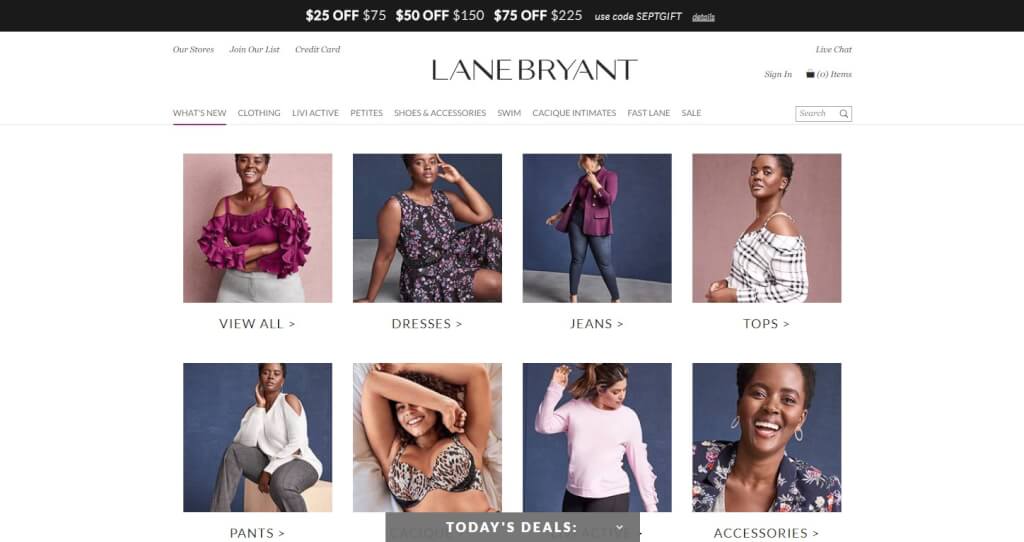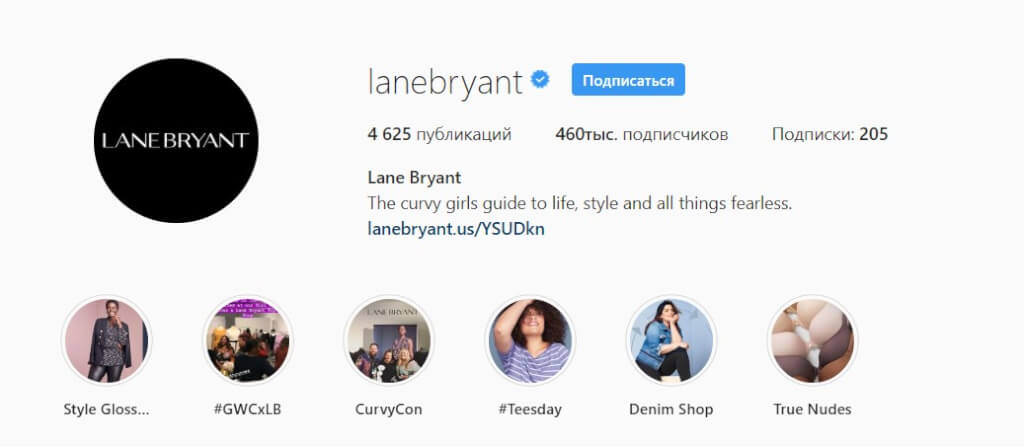How an orphan from Russia became a seamstress in New York and became a millionaire
'17.09.2018'
Source: Jewish.ru
An orphan from Russia, she worked for a long time in New York as a seamstress for a dollar a week. Until the first thought up to produce clothes for pregnant women, and then for women with forms. Spacious fitting rooms and post catalogs with fashion for women in the body soon turned Lena Himmelstein into a millionaire.

Young, but tortured and sleepy, Lena Bryant neatly sat at the table of the clerk of a major New York bank. In her purse lay three hundred dollars, she opened her first account, tells Jewish.ru. Recently, a 25-year-old widow created a studio, and there were so many orders that it was necessary to urgently hire a couple of seamstresses to help and rent a new room. The money for the development of the enterprise was given by the sister's husband.
When the documents on the opening of the account were ready, it turned out that the clerk incorrectly wrote down her name: he called Lane Bryant instead of Lena. The girlfriend accidentally born pseudonym liked - and so the brand Lane Bryant appeared, which earned millions of dollars in the first years.
Lena Himmelstein was born in March 1877 of the year in a Lithuanian shtetl not far from Retavas. Mom died when Lena had 10 days, and Dad died shortly thereafter. Raising a girl lay on the shoulders of grandparents. They could feed and look after them, but they could not educate and bring them into society. In 16 for years, Lena boarded a ship and sailed to New York in the hope that next to her sister Anna, who had already settled in the States, she would pick herself a good place. A miracle did not happen: Lena did not have an education, and the only work available was sewing. At first, for a week of hard work, a young emigrant received a dollar, but soon her efforts and skills were appreciated - in a year she received 15 dollars a week. In 1899, Lena married the jeweler David Bryant, a similar emigrant from the Russian Empire.
The financial situation has improved, but only slightly - despite the promising profession, the spouse turned out to be quite poor. A year after the birth of the first child, David died, and Lena and her son Rafael were left with virtually no means of subsistence.
At the wedding, David presented his wife with diamond earrings. After his death, they often found themselves in a pawnshop, but each time Lena managed to get them back. Now she laid them one last time to buy a sewing machine. Only she could feed her. Lena sewed not in stuffy workshops, but in her sister's close apartment on the Upper West Side, where she moved with the baby. The young widow specialized in the finest combinations, lace underwear for brides and loose "tea" dresses. One day a pregnant client came to Lena and asked to sew something “decent but comfortable” for her. In those days, light industry ignored the features of the figure of future mothers. The women in an interesting position have often been sour at home for the last few months: it was a shame to appear in public in ugly "pregnant" robes, and the stomach simply did not fit into the outfits of the old cut.
Lena accepted the challenge by sewing an elegant dress with an elastic belt and a pleated skirt. This was the first "pregnant" dress in history, made to order.
Very soon, future mothers will make up the majority of Lena Bryant’s clientele. “You cannot even imagine how wonderful it is to invite husband’s business partners to dinner and not look like a laughing stock at the table,” one thankful customer wrote to Lena. In the wake of success, Bryant opened an atelier-shop on the first floor of a house in residential neighborhoods, but there was not enough space, and the clientele was near non-cash. It was necessary to move. In 1904, Lena borrowed 300 dollars from her sister's husband, opened a bank account and, thanks to the misappropriation of a bank clerk, got a new name - Lane. She opened her new large studio atelier Lane Bryant on Fifth Avenue.
Rent amounted to 12,5 dollar per month, the store did not even have mannequins - had to hang dresses on gas pipes. Given the frantic demand for "pregnant" dresses, these difficulties were temporary.

In 1909, Lena married Albert Malsin, a Lithuanian immigrant with a German polytechnic diploma who worked as a mechanical engineer in a company that built amusement parks around the world. For the first four years, two boys and a girl were born in a new family, but motherhood did not interfere with business. Lena no longer sewed - only created new models, the husband took upon herself the financial side of the matter. By 1911, the business brought in quite decent money. But there was still room to develop. In those years, they learned about the brand through “word of mouth” –– satisfied customers told their friends and relatives about the store, and they passed the news on. The method was not bad, but Lane Bryant could make a truly famous brand only advertising. Dresses for pregnant women were the strength of the atelier, but at that time the topic of future motherhood was forbidden in the press. Not a single newspaper dared to post photos of women with a tummy and generally use the word “pregnant” in advertising.
In 1911, the spouses Malsin managed to convince the New York Herald to publish an ad - the amount they had to pay for this advertisement was not disclosed, but the deal paid off for itself. A day after the release of advertising stocks in the store Lane Bryant bought cleaned.
Brand ads began to appear in other publications, but still not as active as we would like. And then an enterprising married couple came up with another way to tell about themselves. They released their first mailing catalog on 32 clothing pages for moms. At the same time, the store moved to a nine-storey building near Fifth Avenue, in the heart of the new shopping district. On the first two floors there are trading rooms, and at the top - sewing workshops and an office.
In addition to the quiet and spacious fitting rooms in the flagship store Lane Bryant was a "ballroom" hall with artificial lighting - so customers could see how the outfit will look in the evening.

One store was not enough, soon a whole network appeared. In 1915, Lane opened its first store in Chicago. By 1917, sales in Lane Bryant already brought in a million dollars, and orders through the catalog provided a huge share of this profit. Then Lane realized that there was another unoccupied niche - clothes for women with curvaceous. And she mastered it. To make the right patterns, she personally measured the parameters of 4500 women, brought out three main “lush” formats and refined them on the basis of the volumes of 200 thousands of women. Thanks to this innovation, 1923's profit for the company reached five million dollars. In the same year, Lane experienced a major tragedy in her life — Albert died suddenly. Lena never married again.
After his death, she cope with the empire for some time with Lane Bryant on her own, but in 1929, she convinced Raphael's son, a graduate of Yale and a New York Journal reporter, to join the business. In 1938, he became president of the company and continued to develop business for a couple with his mother.
Plus-size clothing ended up selling even better than “pregnant.” Clothing catalogs for women in the body were called “style books” and were accompanied by a personal letter from Lane Bryant. Over time, Bryant created patterns for any "non-standards" - fat, thin, tall, tall women and plump girls. She also made “half-size” clothes so that the clothes sat on any shape. Brand Lane Bryant successfully sold not only clothes on the figure, but also soft corsets, things with a cunning "slimming" cut and decoration.
One of the most successful campaigns during the lifetime of Lane Bryant was a series of print ads with the slogan: "Camouflage is needed not only in war."

Income was important, but not the only component of success for Mrs. Bryant. She wanted the staff to be good. Therefore, in 50-ies 3,5 thousands of employees of Lane Bryant received their share of the company's profits, participated in the insurance system in case of temporary disability, hospitalization or other medical problems. Such in those years did not offer any other retail chain. Through the American Red Cross Lane, Bryant provided clothing for victims of natural disasters free of charge; after World War II, she handed over humanitarian packages with things to Europe. She was also an active member of the Society for Assistance to Jewish Immigrants, the Federation of Jewish Philanthropists and other humanitarian organizations.
By the time Lane Bryant died, her company was sixth on the list of the largest US retailers selling through mailing catalogs. Already by 1969, the stores of Lane Bryant were more than a hundred - the revenue reached nearly 200 million dollars.
Since then, the brainchild of clever Lane Bryant has undergone many transformations, not always brilliant. Business continued to grow, but lost a fleur of innovation.
The sons-heirs quarreled and in 1982, they sold the business to Limited Brands, Inc. This company has turned the brand into a synonym for consumer goods of enormous size. It was only when, in 2001, the brand was bought by Charming Shoppes with a focus on plus-size clothing, did the tradition of Lane Bryant begin to recover.







